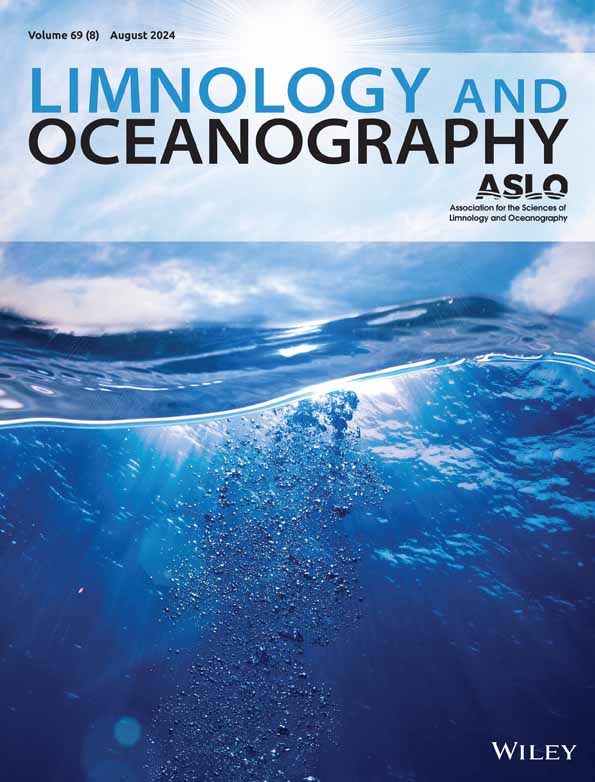Autonomous observations enhance our ability to observe the biological carbon pump across diverse carbon export regimes
IF 3.8
1区 地球科学
Q1 LIMNOLOGY
引用次数: 0
Abstract
The expansion of autonomous observation platforms offers vast opportunities for analyzing ocean ecosystems and their role in carbon export. As part of the EXport Processes in the Ocean from RemoTe Sensing campaign, we autonomously measured the productivity regimes in two contrasting end‐member ecosystem states. The first campaign occurred in the subpolar North Pacific near Ocean Station Papa (Site 1), characterized by iron limitation and a highly regenerative regime. The second captured a springtime bloom in the North Atlantic (Site 2), which typically drives efficient export of productivity. Using a combination of floats and gliders carrying biogeochemical sensors, we quantified gross primary productivity, net community production, and organic carbon export potential (自主观察增强了我们在不同碳出口制度下观察生物碳泵的能力
自主观测平台的扩展为分析海洋生态系统及其在碳输出中的作用提供了巨大的机会。作为“海洋遥感出口过程”活动的一部分,我们自主测量了两种截然不同的终端成员生态系统状态的生产力制度。第一次活动发生在靠近Papa海洋站(Site 1)的亚极地北太平洋,其特点是铁限制和高度再生。第二幅图捕捉到了北大西洋春季的繁殖期(站点2),这通常会推动高效的生产力输出。利用携带生物地球化学传感器的浮子和滑翔机组合,我们量化了总初级生产力、净群落产量和有机碳出口潜力(fCorg),以评估生物碳泵的强度。站点2显示出更高的巡航期生产力,大约是站点1总初级生产力的5倍,是光区净群落产量的13倍。Site 2较高的出口效率反映在许多指数上,例如新生产与净初级生产力的比率(ef - ratio;站点1:0.33;站点2:0.73),沉降颗粒有机碳与净初级生产力的比值(ez‐ratio;站点1:0.24;站点2:0.69),平均每日fCorg(站点1:3.4±0.7;位点2:20.3±2.3 mmol C m−2 d−1)。结合从钍- 234测量得到的颗粒有机碳通量,我们推断,观测到的低净群落产量几乎完全流向了下沉的颗粒有机碳,而Site 2更高的净群落产量导致溶解有机碳产量和下沉的颗粒有机碳的比例接近相等。
本文章由计算机程序翻译,如有差异,请以英文原文为准。
求助全文
约1分钟内获得全文
求助全文
来源期刊

Limnology and Oceanography
地学-海洋学
CiteScore
8.80
自引率
6.70%
发文量
254
审稿时长
3 months
期刊介绍:
Limnology and Oceanography (L&O; print ISSN 0024-3590, online ISSN 1939-5590) publishes original articles, including scholarly reviews, about all aspects of limnology and oceanography. The journal''s unifying theme is the understanding of aquatic systems. Submissions are judged on the originality of their data, interpretations, and ideas, and on the degree to which they can be generalized beyond the particular aquatic system examined. Laboratory and modeling studies must demonstrate relevance to field environments; typically this means that they are bolstered by substantial "real-world" data. Few purely theoretical or purely empirical papers are accepted for review.
 求助内容:
求助内容: 应助结果提醒方式:
应助结果提醒方式:


